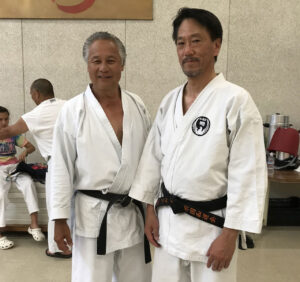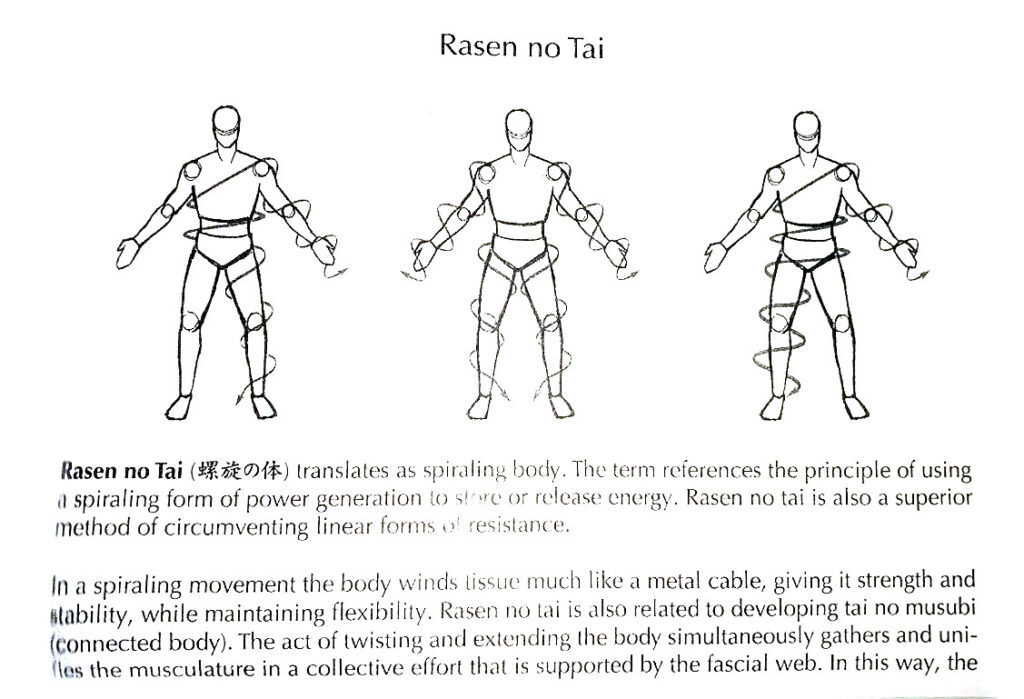Today, we had an enlightening visit with Sensei Ken Yamada. During the 1st half of Sensei Gary’s class, we trained in our usual ritual that includes:
-
Cleaning the floor of the Dojo
-
Stretching
-
Calistenics
-
Strengthening
-
Blocks
-
Strikes
-
Kicks
 For the 2nd half of class Sensei Ken shared a story of his journey with the art of Karate. Starting at about age 13 with a 12 year break, studied the Okinawan style of Wado Kai. In 2010, Sensei Ken traveled to Japan for an advanced degree only to be made aware he had more to learn. In 2019 he joined with fellow practioners to another advanced degree test in the Vancouver Canada. At that time he found a new level of awareness in the practice of Karate.
For the 2nd half of class Sensei Ken shared a story of his journey with the art of Karate. Starting at about age 13 with a 12 year break, studied the Okinawan style of Wado Kai. In 2010, Sensei Ken traveled to Japan for an advanced degree only to be made aware he had more to learn. In 2019 he joined with fellow practioners to another advanced degree test in the Vancouver Canada. At that time he found a new level of awareness in the practice of Karate.
Present today was: Sensei Gary, Calvin, Kevin, David, Joe, Eric, Steve, and Stuart who were all happy and grateful to listen and participate in Sensei Ken’s discovery of advanced or fine-tuning of Karate practice. (Good Mechanics, Mindful training, leads to Maximized power) – Here is a summary and a link to a recording of Saturday’s class will be available on this page. See YouTube link below.
Summary:
-
Posture: Heaven, Earth, Man – Ten, Chi, Jin – Body grounded and aligned. Getting power from the earth. Good posture for good balance.
-
Head aligned above shoulders, chin set back – not protuding out over chest. Back straight. A sting from the heavens pulling the head up.
-
Lower half body sinks to the ground. Relax
-
Bottom of feet – lift toes up to flaten arches to feel grounded. Relax sink.
-
-
Central Axis – Middle of body is the center of gravity. Body to move or turn on that central axis. Time position in video 1:20:30
-
Hip functions – Cross body connectivity. Example: Right arm is connected to left leg. Lower body to power your arms.
-
Taking the Slack out – Relax… tense. Arms become whips driven by hips. Tensions slow you down.
-
Flatten the shoulder blade / scapula. Don’t raise your shoulder. Over extent, you lose power.
-
Body / arm move together – momentum. Time in video 1:35:10
-
Sprialing – Power spirals up through feet, legs, outside hips, around body to arms. Cross body connectivity. Simultaneouly, Spirals down the opposite arm, around body, hips, legs, feet. For example a left arm block or punch. Starts with Right feet, leg, hip… spiral up to left arm and at the same time spirals down right arm, body, hip …. crunching to left foot. Please refer to diagram “Rasen no tai” with origins from Jui Jitsu. Time in video 1:39:13
-
Bowing and Un-Bowing – Related to the action of a Bow. Related to Spiraling. One side compresses the bow and other side un-bows or releases. Crunch the femur bone to feet. Pull your hip bone down to your ankle. This relates to cross body connectivity. Very important to internal power Martial arts. Knee does not move. Time in video 1:40:50
-
Using these mechanics in mindful training while practicing Nihanchi Shoden Kata (time in video 1:43:00), which is referred to as a “internal power Kata”. Utilize (Heaven, Earth, Man), (Central Axis), (Sprialing), (Bowing/Unbowing) … Generating power without much movement. Using the lower body to power the upper body. In performing Nihanchi, movements pop. Time in video 1:43:42.
-
Tanden – 3″ below belly button and behind the Tanden, low back in Chinese “Mingmen” Time in vide 1:46:25. Move from your Tanden. Turn from the Tanden. Takes a lot training. Imagine yourself moving the Tanden. In Chinese martial arts there are upper, middle, and lower Tanden. When you strike, it should be grounded in your Mingmen.
-
Demonstration of using your body correctly in strikes/blocks. Time in video 1:51:00
-
Discussion on “Teaching to the level of the Practitioner”. As one becomes more seasoned to Karate techniques, more advanced techniques “fine tune” these techniques. For example general stikes, blocks, and movement can evolve to a higher level.
-
Words of wisdom:
-
If you can’t do it slow, you can’t do it fast
-
Build awareness of your body
-
Implement awareness in your practice of Karate
-
If you use your body correctly, your form naturally follows
-

Spiral Diagram from book: Shindo Yoshis Ryu, History and Technique by Tobin Threadgill and Shingo Ogami.


0 Comments